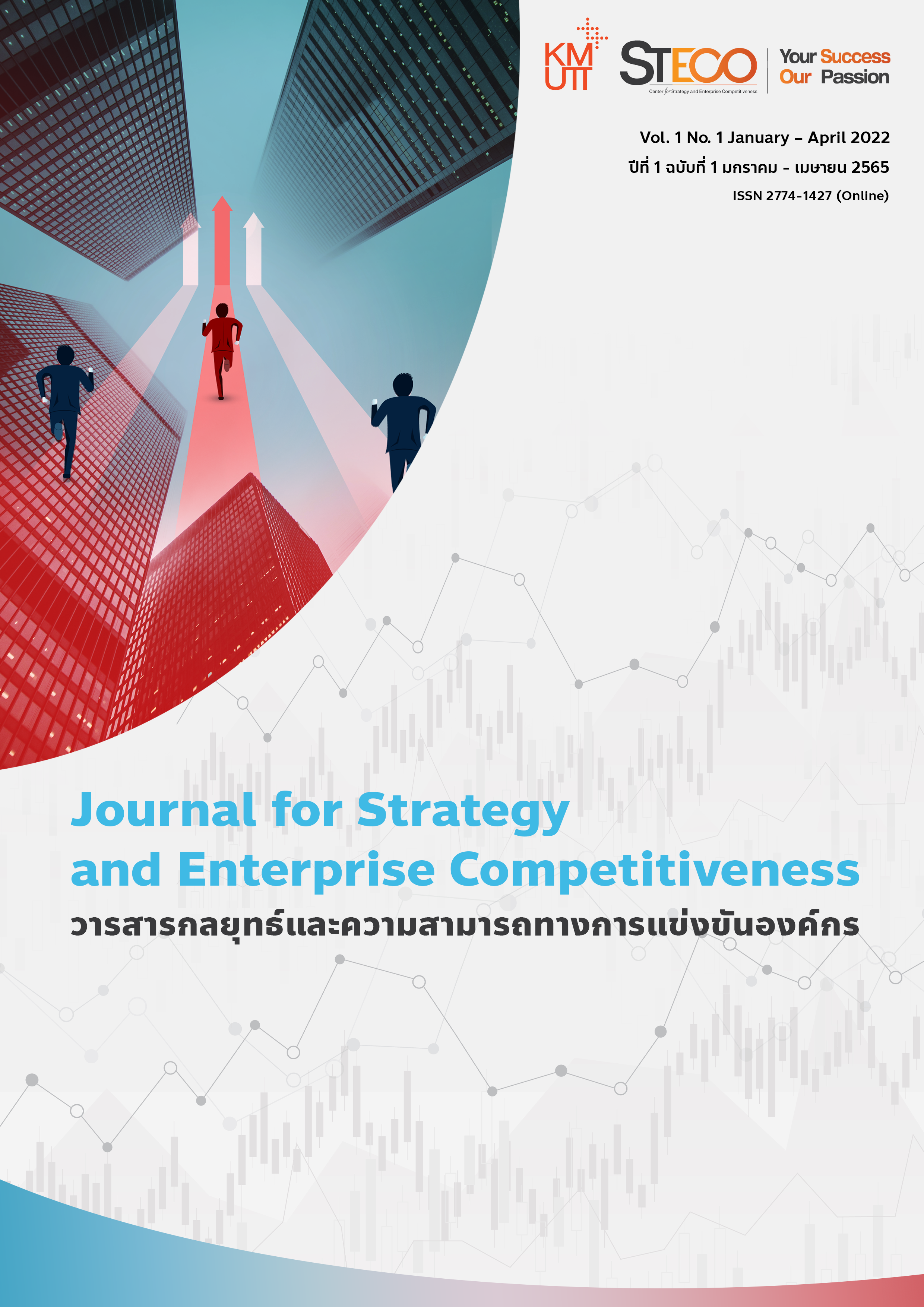Effect of Leadership on Creative problem Solving of Generation Z a case study of Burapha University students
Keywords:
leadership style, creative problem-solving ideas , Generation ZAbstract
This research is to study the Effect of leadership on creative problem solving within Generation Z, a case study of Burapha University students. Objectives 1) To study the leadership and creative problem-solving thinking. 2) To compare the ideas of creative problem solving. and 3) To study the influence of leadership effect on creative problem-solving thinking of Generation Z. To assess the creative problem solving of Generation Z a questionnaire and test were distributed amounts students at Burapha University. The 413 subjects were taken from 1st - 4th year undergraduate students, Academic Year 2019, The statistics used were descriptive statistics for frequency, mean and standard deviation. The statistical tools used in inferential statistics are one-way analysis of variance (ANOVA) and Multiple Regression Analysis.
Results 1) The people of Generation Z had a level of behavioral style of shared leadership style (= 3.98), level of creative leadership behavior (
= 3.89) and the overall level of strategic leadership behavior in the 21st century (
= 3.82) is high. 2) The results of the comparison of creative problem-solving ideas found that the leadership styles of different Generation Z had no difference in creative problem-solving thinking at the statistical significance level of 0.05. and 3) Shared Leadership Style, Creative Leadership and strategic leadership in the 21st century influences Generation Z creative problem-solving thinking statistically significant level of 0.05.
References
Bersin, J. (2013). Employee retention now a big issue: Why the tide has turned. Bersin by Deloitte, 16, 1-4.
Bourke, J., and Dillon, B. (2016). The six signature traits of inclusive leadership: Thriving in a diverse new world. Deloitte Insights.
Chaikaew, P. (2016). The Influence of Generation Y Leadership on Business Success. A Case Study of Generation Y Entrepreneurs in Thailand. Thammasat University.
Chamnongwet, P. (2013). What is Gen Y People? Why should organization cut people?. Retrieved from https://www.entraining.net/article/%E0%B8%84%E0%B8%99-Gen-Y
Chuenphinitsakul, W. (2012). Leadership and organization climate affecting organization culture of companies in Bangkok Metropolitan Area. Business Administration, Srinakharinwirot University.
Daniel, B. (2016) Gen Z Will Change Your World Again from https://www.burrus.com/2016/02/gen-z-will-change-your-world-again/
Glass, A. (2007). Understanding generational differences for competitive success. Industrial and commercial training.
Guilford, J. P. (1971). Some misconceptions regarding measurement of creative talents. The Journal of Creative Behavior.
Guilford, J. P. (1980). Cognitive styles: What are they?. Educational and psychological Measurement, 40(3), 715-735.
Hurst, J. L., and Good, L. K. (2009). Generation Y and career choice: The impact of retail career perceptions, expectations and entitlement perceptions. Career Development International.
Junklom, A. (2018). Graduate overflowing the market’s. Retrieved from https://www.matichon.co.th/prachachuen/prachachuen-scoop/news_1223338/
Ireland, R. D., & Hitt, M. A. (1999). Achieving and maintaining strategic competitiveness in the 21st century: The role of strategic leadership. Academy of Management Perspectives, 13(1), 43-57.
Mannheim, K. (1952). ‘The Problem of a Sociology of Knowledge (pp. 134-90).
Martin, A. J. (2005). The role of positive psychology in enhancing satisfaction, motivation, and productivity in the workplace. Journal of Organizational Behavior Management, 24(1-2), 113-133.
Nunnally, J. C. (1978). An overview of psychological measurement. Clinical diagnosis of mental disorders, 97-146.
Panmanee, A. (1994). Creative. Bankok: Publishing House 1412.
Patiphan, K. (2012). A structural equation model of creative leadership for vocational college administrators. Educational administration, Khon Kaen University.
Prime, J., and Salib, E. R. (2014). Inclusive leadership: The view from six countries. Catalyst, 120.
Yamane, T. (1973). Statistics: An introduction analysis. Harper & Row.
Downloads
Published
How to Cite
Issue
Section
License
Copyright (c) 2022 Journal for Strategy and Enterprise Competitiveness

This work is licensed under a Creative Commons Attribution-NonCommercial-NoDerivatives 4.0 International License.
The opinions appearing in the content of articles of Journal for strategy and enterprise competitiveness. It is the opinion and responsibility of the article author. It is not the opinion and responsibility of the Center for strategy and enterprise competitiveness, King Mongkut's University of Technology Thonburi
Articles, information, content and images, etc., in the Journal for strategy and enterprise competitiveness. It is the exclusive copyright of the Center for strategy and enterprise competitiveness, King Mongkut's University of Technology Thonburi. If an individual or entity wants to distribute all or part of the content or for any action must obtain written permission from the Center for Strategy and enterprise Competitiveness, King Mongkut's University of Technology Thonburi.



